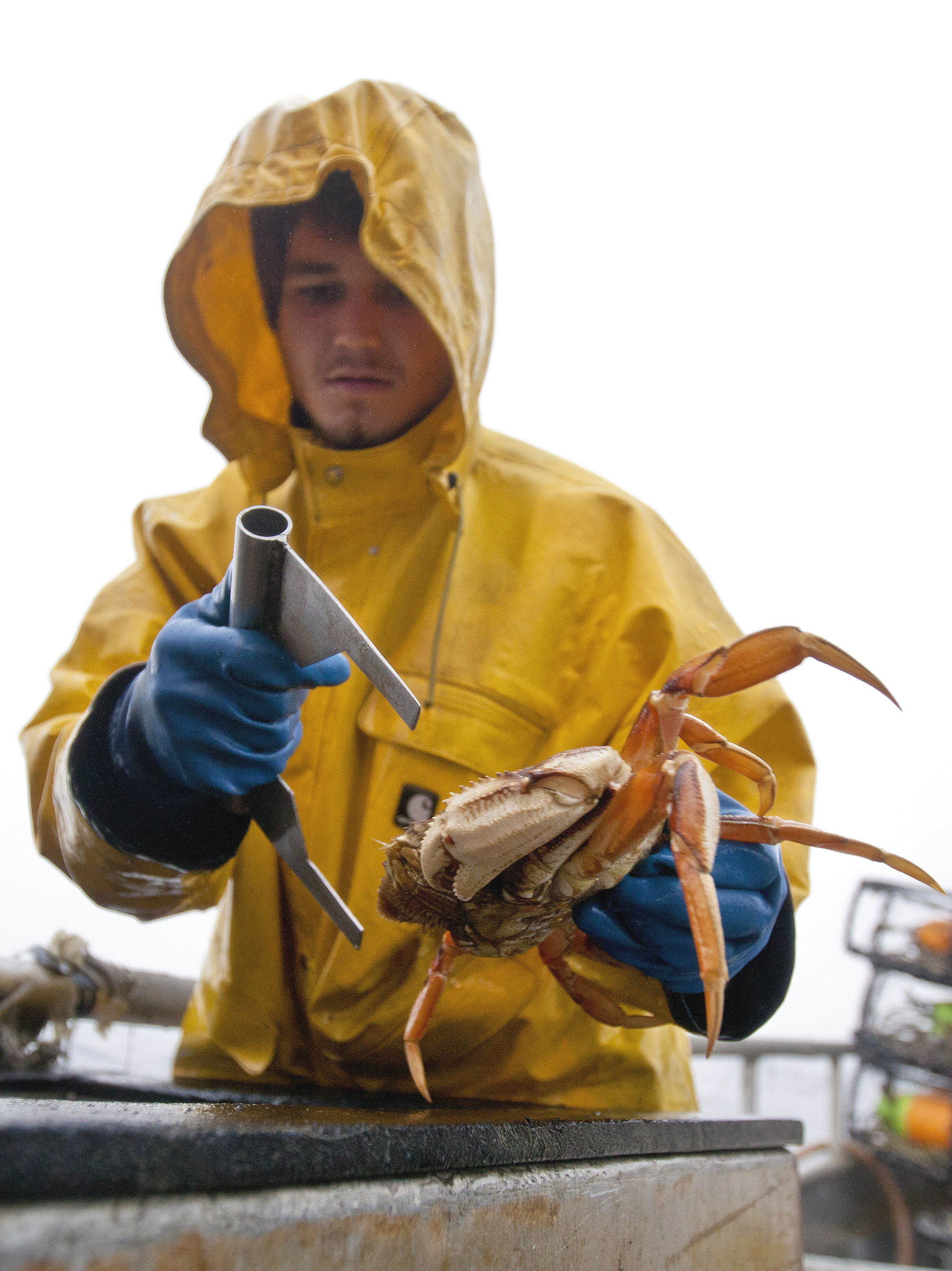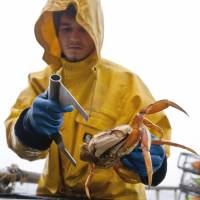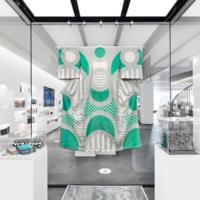It is the dawn of the supercrab.
Crabs are bulking up on carbon pollution that pours out of power plants, factories and vehicles and settles in the oceans, turning the tough crustaceans into even more fearsome predators.
That presents a major problem for Chesapeake Bay, where crabs eat oysters. In a life-isn't-fair twist, the same carbon that crabs absorb to grow bigger stymies the development of oysters.
"Higher levels of carbon in the ocean are causing oysters to grow slower, and their predators — such as blue crabs — to grow faster," Justin Baker Ries, a marine geologist at the University of North Carolina's Aquarium Research Center, said in a recent interview.
Over the next 75 to 100 years, ocean acidification could supersize blue crabs, which may then eat more oysters and other organisms and possibly throw the food chain of the nation's largest estuary out of whack.
That would undermine an effort to rebuild the stocks of both creatures. Virginia and Maryland are pouring hundreds of millions of dollars into rebuilding the populations of blue crabs and oysters to some semblance of their historic numbers.
The problem extends beyond crabs and Chesapeake Bay. Lobsters and shrimp are also bulking up on carbon dioxide along the Atlantic coast. Like oysters, coral that helps protect small organisms from big predators is being adversely affected by higher acidity in the waters.
Crabs put away carbon like nobody's business. The more they eat, the faster they molt, a growth spurt during which their shells go soft. Carbon helps speed the process so they emerge bigger and perhaps stronger, less vulnerable to predators and more formidable predators themselves.
At UNC, marine geologists are analyzing video of the slaughter that took place when they put mud crabs and oysters in tanks they intentionally polluted with carbon over three months for a 2011 study.
It was like watching lions tear apart lambs. The crabs scurried from their side of the tanks, banged on the shells of the traumatized oysters, pried them open with a claw in a way similar to what humans do with a knife at restaurants and gobbled them down.
For crab lovers, bigger doesn't necessarily mean better. Carbon-absorbing crabs put all their energy into upgrading shells, not flesh — like a mansion without much furniture. So diners might be disappointed years from now when they crack open huge crabs and find little meat.
The research showing the effects of carbon on marine organisms was published in the journal Geology in 2009. The study, led by Ries and coauthored with Anne Cohen and Daniel McCorkle, and found that crabs, lobsters and shrimp grew bigger more rapidly as carbon pollution increased. Chesapeake blue crabs grew nearly four times faster in high-carbon tanks than in low-carbon tanks.
But under the same conditions, oysters, scallops and other organisms struggle to grow, making them more vulnerable to carnivores. Oysters in high-carbon tanks grew at only one-quarter the speed they did in low-carbon conditions, according to the study.
"It's taking them longer to go from oyster spat to oyster adult," said Luke Dodd, a doctoral candidate at UNC who put the crabs in a tank with oysters. "When you're a baby, there's tons of predators that want to eat you up."
But when they put mud crabs and oysters together in the tanks polluted with carbon, Dodd, Michael Piehler of UNC and Jonathan Grabowski of Northeastern University observed something they didn't expect, a response that gave oysters a prayer.
Under conditions with lower levels of carbon, two mud crabs polished off 20 oysters in six hours. But in the aquariums with higher levels of carbon, the mud crabs seemed confused.
They went over to the oysters, but they didn't eat as many — sometimes fewer than half of what other crabs ate under normal conditions. Dodd scratched his head. "Acidification may be confusing the crab," he said. The situation, he concluded, "is more complicated than you'd be led to believe."
Ries said crabs might be getting loopy from all that carbon in their systems, depriving them of oxygen and putting them in a fog.
Both researchers said that acidification happens so slowly that crabs may eventually grow more accustomed to it. "You can't discount evolution taking over," Dodd said.
The Chesapeake Bay oyster certainly doesn't need any more bad news. Two diseases, Dermo and MSX, origin unknown, have killed them by the bushel for decades. That and overfishing have dramatically reduced their numbers, officials said.
Recently, the critter showed signs of a modest recovery in Virginia and Maryland. Virginia, which harvested only 79,600 bushels of oysters in 2005, racked up about 236,200 bushels in 2011, the most since 1989. Maryland had 26,400 bushels in 2005 but hauled in 121,200 bushels in 2011.
Oysters are filter feeders that play a critical role in cleaning the polluted bay.
"One hundred years ago, the bay was crystal-clear because they filtered it every three weeks, as opposed to every three years today," Ries said.
That is one of several reasons why the two states recently launched all-out offensives to protect bay oysters.
Virginia created huge sanctuaries in public waters such as the Rappahannock River where watermen are allowed to harvest oysters on a rotating basis about every two years.
The state also strongly encourages private aquaculture, selling plots of riverbed or bay floor to oyster farmers for $1.50 an acre (0.4 hectare).
Maryland has poured $50 million into its oyster recovery effort over the past 16 years.
The state now forbids oyster harvesting on a quarter of the bars where they grow, protecting them with a fine of up to $25,000 and 15 years in prison. Maryland is only beginning to develop aquaculture.
But along with the oyster, the bay blue crab is making a comeback. In the last winter dredge survey, an annual population count funded by the two states, crab numbers were up 66 percent from 2003.
The Chesapeake Bay Program — the regional partnership trying to restore the bay — called it a baby boomlet, with an increase from 207 million juvenile crabs in 2011 to 587 million the next year.
The population jumped after Virginia closed its winter dredge season, when watermen dragged heavy metal traps in rivers at a time when mostly females were preparing to reproduce.
The season remains closed, all but ensuring more crabs — and more hungry mouths to feed on mussels, clams and the bay oyster.
Under ocean acidification, oysters won't be able to keep up. "As you're using up your energy, it could make you more vulnerable not just to predators but to disease," Dodd said.




















With your current subscription plan you can comment on stories. However, before writing your first comment, please create a display name in the Profile section of your subscriber account page.